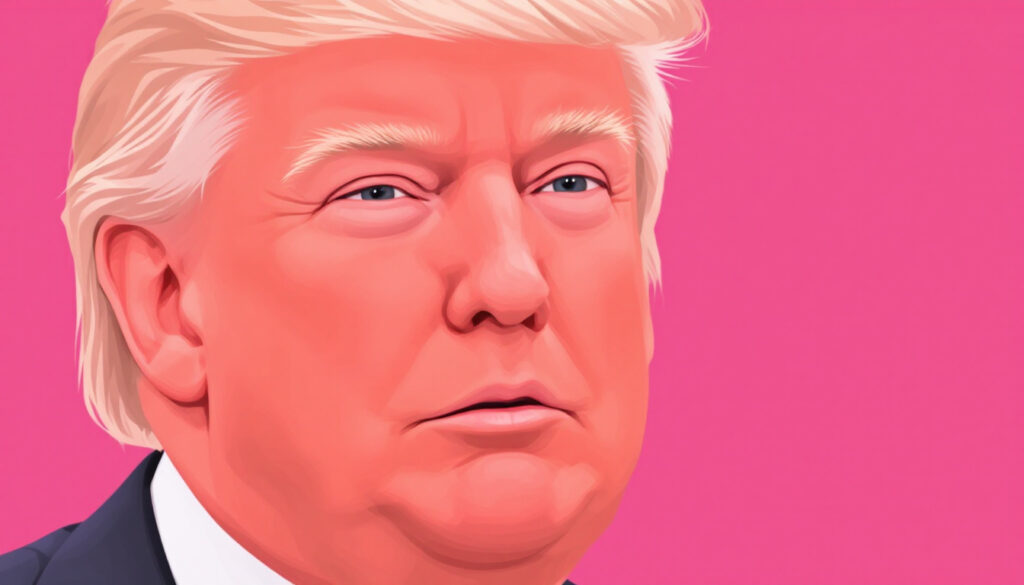How Are Trump's Policies Influencing Central Bank Gold Buying?
The global gold market is witnessing an unprecedented transformation as central banks around the world dramatically increase their gold purchases. This surge coincides with the return of Donald Trump to the White House and the implementation of his economic policies, creating a fascinating intersection of politics and precious metals investment. The impact of Trump's policies reshaping global commodity markets has been particularly evident in the gold sector.
The Surge in Central Bank Gold Purchases
Record-Breaking Acquisition Trends
Central banks have embarked on a gold-buying spree of historic proportions, purchasing more than 1,000 metric tons of gold annually since 2022. This pace represents a dramatic shift in reserve asset management that intensified following Trump's election victory, with Q4 2024 seeing a remarkable 54% year-on-year increase to 333 tons.
The scale of these purchases is staggering when viewed in historical context. Current central bank acquisition rates are running at twice the annual average observed during the previous decade, signaling a fundamental shift in institutional attitude toward the yellow metal.
Industry analysts are now predicting that 2025 may see the highest central bank demand in many decades, as geopolitical tensions and economic uncertainties continue to drive institutions toward safe-haven assets. Recent gold market analysis and future predictions suggest this trend is likely to continue.
Current Gold Market Performance
The impact on gold prices has been dramatic. Spot gold reached a record high of $3,167.57 per troy ounce in April 2025, representing a remarkable 19% gain since the start of 2025 alone. Even more impressive is the overall increase of 71% since the end of 2022, when the central bank buying trend first accelerated.
Central banks now account for 23% of global gold consumption, making them the most influential buyer segment in the market. This institutional demand provides a solid floor for gold prices and suggests continued strength in the market even at these elevated price levels.
Why Are Central Banks Accelerating Gold Purchases?
Geopolitical Uncertainty Under Trump Administration
The Trump administration's approach to international relations and trade has become a significant driver of central bank gold purchases. Trump's aggressive tariff policies and initiation of global trade wars have created an environment of economic uncertainty that makes gold particularly attractive.
Trump's approach to the Ukraine conflict, which differs substantially from his predecessor, has further contributed to global instability. His questioning of long-standing alliances with European partners is disrupting the established world order that has prevailed since the end of World War II.
Perhaps most concerning for many central banks are Trump's explicit threats of punitive tariffs against countries perceived to be actively de-dollarizing. This has created a catch-22 situation where banks feel compelled to diversify away from dollar holdings while simultaneously needing to conceal these efforts. According to recent gold price analysis & geopolitical impact studies, these tensions are likely to persist.
De-Dollarization Strategy
A strategic shift toward de-dollarization lies at the heart of the central bank gold rush. Currently, emerging market central banks hold approximately 10% of their assets in gold, a figure that Michael Widmer, a respected strategist at Bank of America, suggests is far too low.
According to Widmer and other analysts, the optimal gold holdings for proper diversification should be around 30% of assets. Reaching this target would require an additional 11,000 tons of gold purchases by central banks globally – more than three years of total global gold production.
This massive potential demand comes at a time when there is demonstrably less incentive for central banks to add U.S. Treasuries to their portfolios amid policy uncertainty. The risk of dollar-denominated assets experiencing volatility or potential sanctions has made gold an increasingly attractive alternative.
Inflation Hedging
Central banks are increasingly concerned about spiraling inflation due to tariff pass-through to consumers. Trump's proposed tariffs of 10-60% on various imports would inevitably lead to higher consumer prices across multiple sectors.
As workers seek higher wages in this inflationary environment, the risk of a wage-price spiral becomes more pronounced. Gold's traditional role as a store of value and wealth becomes increasingly attractive in such scenarios.
Both investors and institutions are increasingly valuing gold's lack of credit or counterparty risk – a unique attribute highlighted by Macquarie analysts as particularly important during periods of economic uncertainty. Macquarie's bold gold price forecast for 2025 reflects this growing confidence in the metal's value proposition.
Which Central Banks Are Leading Gold Purchases?
Major Gold Buyers
Poland and China have been identified as the largest buyers in early 2025, continuing a trend that began several years earlier. Official data shows central banks collectively added a net 44 tons to reserves in January-February 2025 alone.
However, official figures likely represent only a fraction of actual purchases. According to World Gold Council estimates, only 34% of total central bank gold demand is officially reported to the International Monetary Fund (IMF). This suggests a significant amount of undisclosed acquisition activity.
The lack of transparency is not coincidental. Many central banks may be purchasing gold without disclosure specifically to avoid potential tariffs or political repercussions. Trump's explicit threats against de-dollarizing nations have created powerful incentives for central banks to maintain secrecy around their diversification efforts.
Regional Purchasing Patterns
Emerging market central banks are showing the strongest interest in gold accumulation, particularly those with historically lower gold reserves looking to increase their holdings. The prioritization of diversification away from dollar-denominated assets has become a strategic imperative for many of these institutions.
Asian central banks have been particularly active in building gold reserves. Countries like Thailand, Singapore, and the Philippines have been quietly expanding their gold holdings, often through undisclosed channels to avoid drawing attention to their de-dollarization strategies.
This regional pattern reflects both economic pragmatism and geopolitical realignment, as Asian economies increasingly look to reduce dependence on the U.S. dollar while hedging against potential currency volatility.
What Makes Gold Attractive Despite High Prices?
Gold's Unique Value Proposition
The traditional price sensitivity of central banks is being overcome by expectations of steadily rising prices. Rather than viewing current record prices as a deterrent, many central banks see them as confirmation of gold's value trajectory and fear being left behind if they delay purchases.
Gold's lack of credit or counterparty risk is increasingly valued by official institutions in a world of growing geopolitical tensions. Unlike government bonds, which depend on the issuer's creditworthiness, physical gold represents value independent of any government's promises.
Physical gold offers protection against both geopolitical and economic uncertainties, making it particularly valuable during periods of transition or instability. An in-depth analysis of gold price trends in 2024 shows how this value proposition has strengthened over time.
Gold vs. Traditional Safe Havens
U.S. Treasuries and dollars are facing unprecedented competition from gold for safe-haven status. Previously, dollar-denominated assets were the automatic choice for safety during market turbulence, but that dynamic is changing rapidly.
Uncertainty about U.S. economic policy is expected to persist for years, regardless of who wins the 2028 election. This long-term uncertainty incentivizes central banks to establish more diverse reserve portfolios now rather than waiting for more favorable prices.
Gold provides diversification away from dollar-denominated assets at a time when many countries are concerned about potential currency manipulations or sanctions. According to a recent Reuters report, physical gold offers protection against potential currency devaluations, which history shows frequently occur during periods of economic stress or geopolitical realignment.
Future Implications for the Gold Market
The continued robust demand from central banks creates a new dynamic in gold markets that differs substantially from previous decades. With institutional buyers demonstrating less price sensitivity than retail investors, gold may maintain its upward trajectory despite traditional technical indicators suggesting overvaluation.
Gold mining companies are responding to this demand by accelerating production plans and exploration activities. However, geological constraints mean that supply cannot quickly adjust to meet demand, creating potential for sustained price support even if other demand segments weaken.
The interplay between Trump's policies and central bank responses will likely remain a dominant theme in precious metals markets through 2025 and beyond. Investors would be wise to monitor both official gold purchase announcements and the more challenging task of tracking undisclosed acquisitions.
FAQs About Central Bank Gold Buying
Why are central banks buying gold at record prices?
Central banks are purchasing gold at record prices due to expectations of continued price appreciation, concerns about U.S. policy uncertainty, and a strategic shift toward de-dollarization of reserves. The unique attributes of gold as a reserve asset – including its lack of counterparty risk and independence from any single government's policies – make it particularly valuable during periods of geopolitical tension.
How much gold do central banks currently hold?
Emerging market central banks currently hold approximately 10% of their assets in gold, significantly below the 30% level that analysts suggest would be optimal for proper diversification. Advanced economy central banks typically maintain higher gold allocations, with some European institutions holding more than 50% of reserves in gold.
Will central bank gold buying continue through 2025?
Analysts predict central bank gold buying will remain strong throughout 2025, with some suggesting it could be the highest in many decades despite record high prices. The combination of de-dollarization strategies, inflation hedging, and geopolitical uncertainty creates a powerful incentive for continued purchases regardless of price levels.
How is Trump's presidency affecting the gold market?
Trump's policies, including tariff threats, trade wars, and questioning of international alliances, have created economic uncertainty that has driven central banks to accelerate gold purchases as a hedge against dollar-related risks. His explicit targeting of countries perceived to be de-dollarizing has paradoxically accelerated the very trend it aims to discourage, as countries seek to diversify reserves while maintaining secrecy about their activities.
Ready to Capture Investment Opportunities from Major ASX Discoveries?
Don't miss the next market-moving mineral discovery on the ASX. Visit Discovery Alert's discoveries page to see how our proprietary Discovery IQ model identifies high-potential opportunities before the broader market, delivering actionable insights straight to your inbox.




